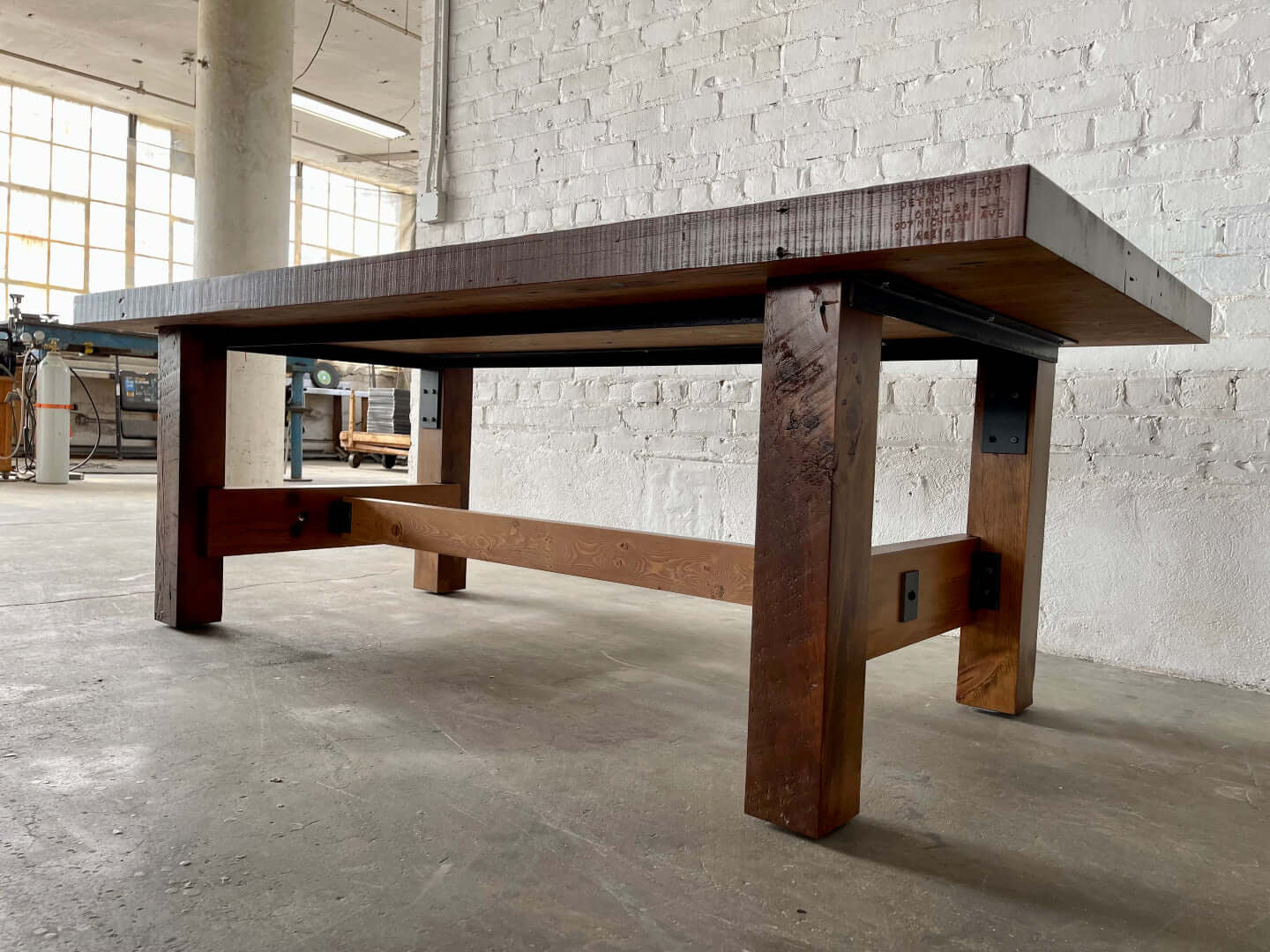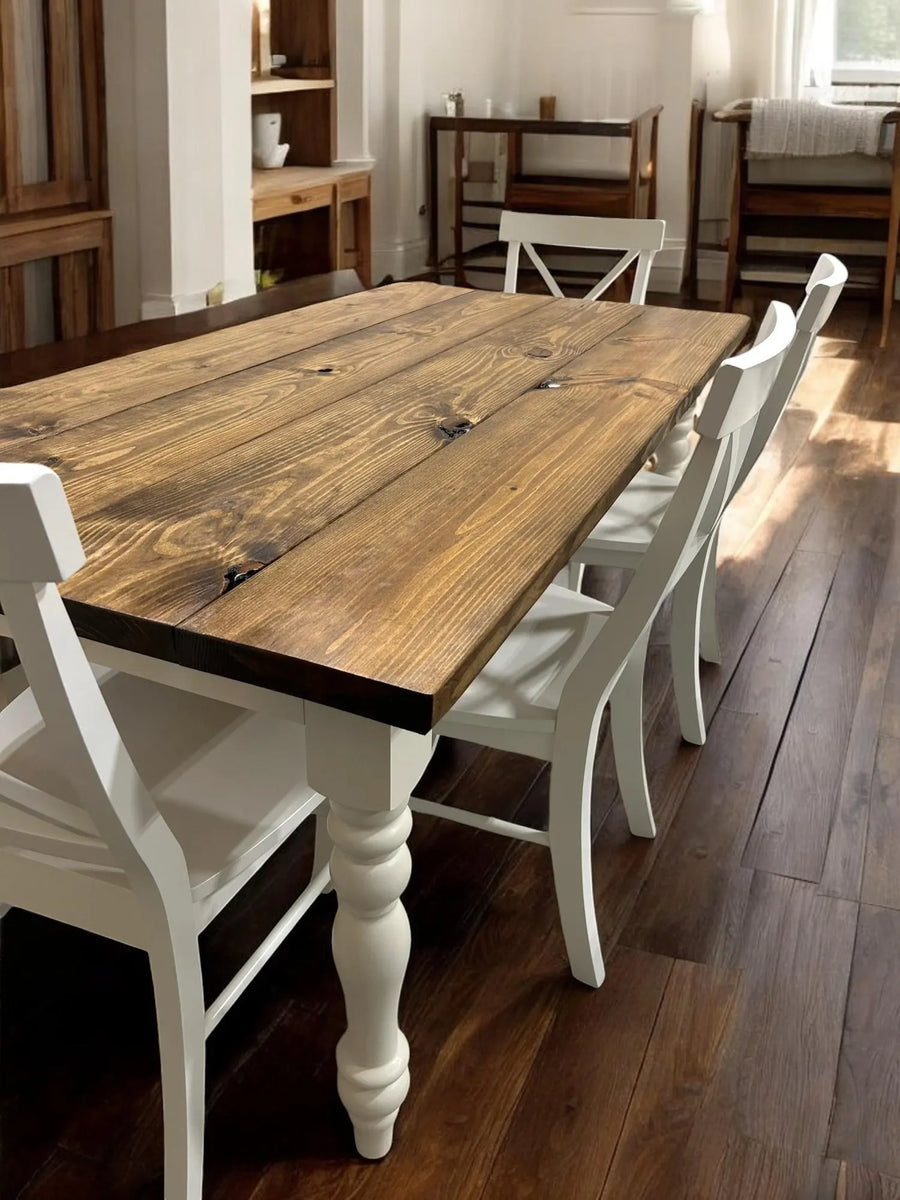Redefine Your Table's Appeal with Beautiful Dining Table Legs Wood Styles
Redefine Your Table's Appeal with Beautiful Dining Table Legs Wood Styles
Blog Article
Checking Out the Different Sorts Of Eating Table Legs Timber for Your Eating Space
The choice of dining table legs wood can profoundly impact both the visual and practical high qualities of your eating room. Solid wood choices, such as oak and walnut, give a classic appearance with unmatched resilience, while crafted timber alternatives provide cutting-edge designs that mimic the richness of all-natural grains. Additionally, the expanding pattern of redeemed wood introduces a sustainable component that appeals to eco aware customers. As we explore these numerous options, it ends up being vital to think about not just the aesthetic charm but additionally the functional implications of each product option. What variables should direct your decision?
Solid Timber Options

Furthermore, solid wood is renowned for its toughness and longevity. Unlike engineered materials, solid timber is much less vulnerable to warping and damages in time when effectively maintained. This makes it an ideal option for households or those who frequently organize events. Each piece of solid wood is special, showcasing individual qualities that add to the beauty and character of the dining table.
In addition, strong timber can be ended up in many means, ranging from natural oils to tarnished surfaces, permitting house owners to customize their furniture to match their decor. In recap, choosing solid wood for dining table legs not only makes certain structural honesty yet likewise enhances the visual appeal of the eating location, making it a beneficial financial investment for any type of home.
Engineered Wood Alternatives

Plywood, built from numerous layers of wood veneer, is steady and specifically strong, making it an exceptional choice for eating table legs. Its split make-up enables it to endure adjustments in moisture and temperature level far better than typical strong timber. MDF, on the various other hand, uses a smooth surface area for painting or veneering, enabling designers to accomplish a refined look while maintaining structural stability.
Particleboard, frequently used in affordable choices, provides suitable strength and is light-weight, making it less complicated to deal with. It may not be as long lasting as plywood or MDF. When selecting crafted timber choices, it is important to take into consideration the desired usage and desired visual. These products not only boost the capability of dining spaces however additionally enable higher style flexibility, guaranteeing that contemporary and traditional designs can exist side-by-side sympathetically.
Reclaimed Wood Features
Recovered wood offers an unique blend of sustainability and character, making it an increasingly preferred choice for eating table legs. Sourced from old barns, manufacturing facilities, and other structures, redeemed wood embodies a history that brand-new materials merely can not replicate. Each piece carries its very own story, noted by distinct blemishes, knots, and varying grain patterns, which add to a table's one-of-a-kind visual charm.
Along with its visual beauty, redeemed timber is an ecologically pleasant choice. By repurposing formerly utilized products, it minimizes the demand for new lumber, hence assisting to lessen and conserve forests waste. This aligns with an expanding customer preference for lasting methods in furnishings.
Moreover, reclaimed timber is frequently a lot more long lasting than newly harvested wood because of its age. The natural drying procedure that redeemed timber undertakes cause a denser and more powerful product, making it much less susceptible to warping and splitting. This enhances the long life of dining tables, permitting them to stand up to pop over to this site the roughness of day-to-day usage.
Softwood vs. Wood
When selecting eating table legs, comprehending the differences in between softwood and hardwood is critical for attaining both visual and practical goals. They generally display an even more rustic appearance, making them suitable for informal or country-style dining rooms.
On the various other hand, woods, sourced from deciduous trees like maple, oak, and cherry, are renowned for their density, stamina, and sturdiness. The complex grain patterns and abundant hues of hardwoods provide a advanced and classic charm, making them ideal for official eating settings. While woods often tend to be extra pricey and heavier, their durability against wear and tear frequently validates the financial investment.
Ultimately, the option in between softwood and wood for dining table legs ought to align with your layout vision, use needs, and budget, making sure that your eating room mirrors your personal design while remaining practical gradually.

Therapies and coatings
The aesthetic allure and longevity of table legs can be significantly improved with various surfaces and treatments. These procedures not just secure the timber from damage however also raise its look, enabling it to enhance diverse indoor designs.
One usual treatment is tarnishing, which penetrates the timber and improves its all-natural grain while including color. Stains offer a rich, sophisticated appearance, enabling house owners to match their furniture with existing style. Conversely, clear finishes such as polyurethane or varnish create a protective layer without altering the wood's original hue, guaranteeing sturdiness versus deterioration.
Furthermore, try this web-site natural oils, like tung or linseed oil, nurture the timber and provide a refined luster, all while being environmentally friendly. These oils allow the surface area to breathe, stopping dampness build-up and prospective bending.
For those seeking a rustic appeal, weather-beaten or distressed surfaces can be related to develop an aged appearance, adding personality to the item. Inevitably, the option of treatments and surfaces relies on personal preference, wanted aesthetic appeals, and the details wood kind, making it vital to think about these aspects when selecting table legs for your space.
Final Thought
Solid woods, engineered options, and recovered alternatives each deal distinctive advantages, catering to different choices and requirements. Eventually, the choice of timber kind should line up with wanted design, longevity, and environmental considerations, boosting the general eating experience.
The choice of eating table legs wood can exceptionally affect both the aesthetic and useful high qualities of your eating room - Dining Table Legs Wood. Strong timber choices, such as oak and walnut, provide a timeless look with unparalleled durability, while crafted wood options provide ingenious designs that imitate the richness of natural grains. Strong wood supplies a useful reference timeless quality that can raise the total design of a dining room. Each piece of strong wood is special, showcasing specific attributes that add to the beauty and character of the eating table
Additionally, redeemed timber is typically much more durable than freshly collected wood due to its age.
Report this page